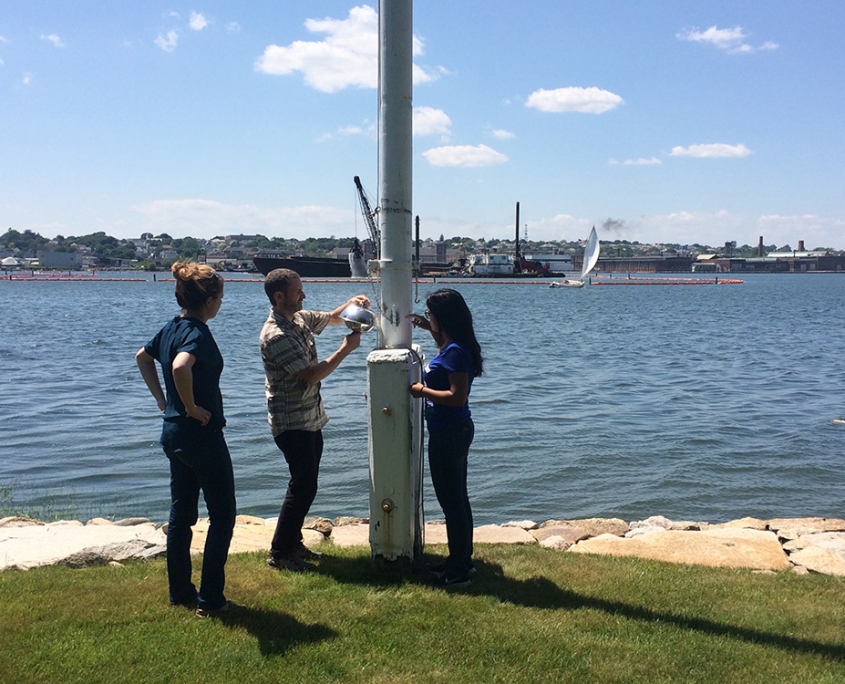New Bedford Harbor a Source of Airborne PCBs
Originally Posted on: March 14th, 2017
Polychlorinated biphenyls (PCBs), a known carcinogen, were banned by law in 1976. Unfortunately, that doesn’t mean PCBs have vanished from our environment. New research at the University of Iowa and Boston University confirms that emissions from the New Bedford Harbor in Massachusetts have resulted in unusually high concentrations of airborne PCBs in the air surrounding the body of water.
Researchers found that the levels of airborne PCBs from the New Bedford Harbor are higher than from any other water source in North America. Their study, “Release of Airborne Polychlorinated Biphenyls from New Bedford Harbor Results in Elevated Concentrations in the Surrounding Air,” appeared in Environmental Science & Technology Letters earlier this week.
“This project is unique because the community requested the study and has been integral to its success,” explains Wendy Heiger-Bernays, associate professor at the Boston University School of Public Health and one of the study’s coauthors. Residents of the neighborhoods around the harbor have been aware of the PCBs in the harbor since at least 1982.

Warning sign near New Bedford Harbor superfund clean-up site. Photo courtesy of U.S. EPA.
PCBs can cause a variety of adverse health effects, including an increased risk for cancer in humans, says Keri Hornbuckle, professor of civil and environmental engineering at the University of Iowa and one of the lead researchers on the study. However, Hornbuckle is quick to add that the effect of long-term inhalation of airborne PCPs is unknown. “Our study shows that people are being exposed to airborne PCBs and that those PCBs are coming from the harbor,” she says.
The New Bedford Harbor is an EPA Superfund site, which means it is designated as an area contaminated by hazardous materials and requiring long-term remediation to reduce the risks to human health and the local environment.
Researchers think the PCBs in New Bedford Harbor originated from at least two industries that used Aroclors in their manufacturing processes in the mid-20th century. The EPA has been working for two decades to dredge sediment from the harbor and remove the contaminants.
“There is much more work to be done,” explains Andres Martinez, research engineer at IIHR—Hydroscience & Engineering, the University of Iowa. “For example, some members of the community believe that the local mud flats are also a source of PCBs. We haven’t looked at that yet.”
Researchers are hopeful that residents will help them to prioritize their next steps.
“We’re trying to do research that is driven by community needs,” Hornbuckle says. “We’ll be looking to the New Bedford Harbor community to help us design our next study.” Funding from the National Institute of Environmental Health Science’s Superfund Research Program made the study possible.

A casual observer checks out EPA clean-up progress at New Bedford Harbor superfund site. Photo courtesy of U.S. EPA
Martinez is the lead author; co-authors from the University of Iowa include Hornbuckle, Bailey N. Hadnott, Andrew M. Awad, and Nicholas J. Herkert. Boston University School of Public Health co-authors include Kathryn Tomsho, Komal Basra, Madeleine K. Scammell, and Wendy Heiger-Bernays.




